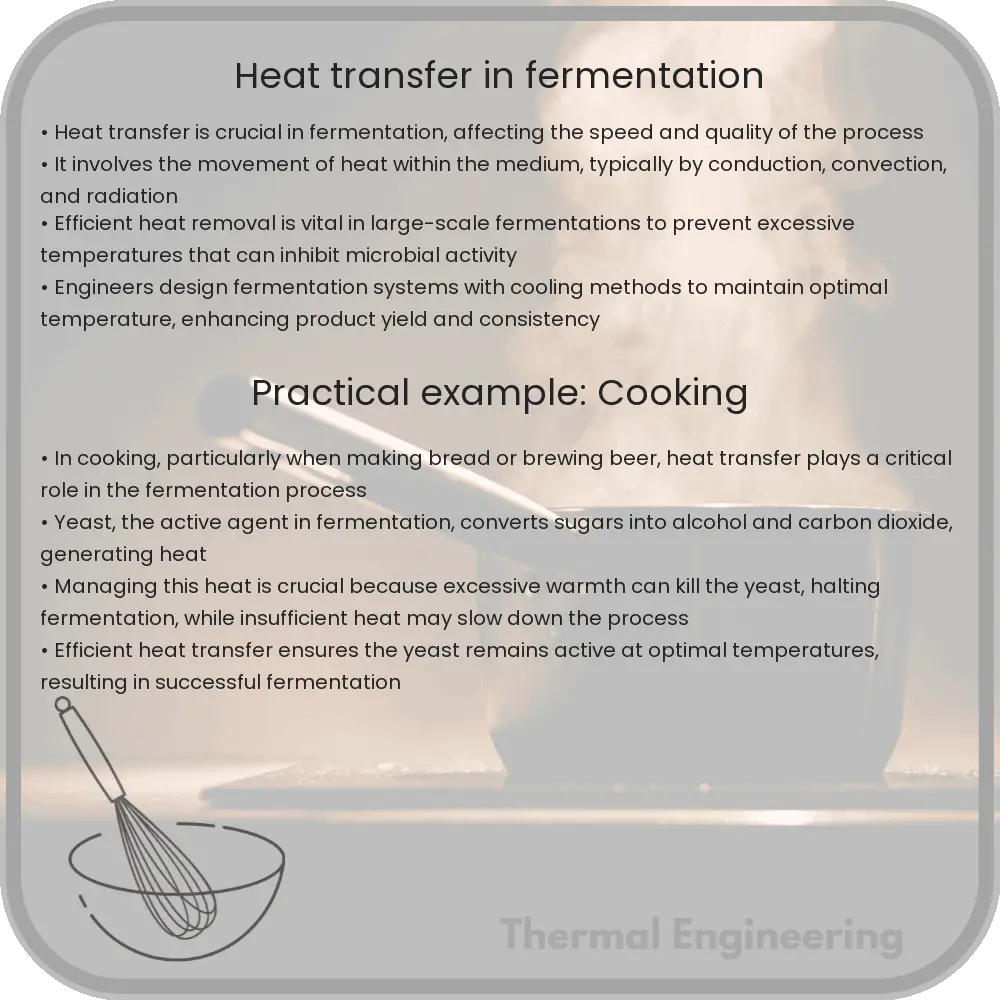Learn about the mechanisms and challenges of heat transfer in fermentation, essential for process efficiency in bioengineering.

Understanding Heat Transfer in Fermentation Processes
Fermentation is a biochemical process used extensively in industries such as food, beverage, and pharmaceuticals. During fermentation, microorganisms such as bacteria and yeast convert organic compounds—typically sugars—into alcohol, gases, or acids. This process is exothermic, meaning it releases heat. Managing this heat is crucial because excessive heat can inhibit or even kill the microorganisms responsible for fermentation, leading to suboptimal product yields. This article explores the principles of heat transfer in fermentation processes and why it’s essential for efficient operation.
Mechanisms of Heat Transfer in Fermentation
Heat transfer in fermentation systems occurs through three primary mechanisms: conduction, convection, and radiation. However, in the context of bioreactors, conduction and convection are the most relevant.
- Conduction: This is the transfer of heat through a solid or between two solids in contact without the movement of the material. In fermentation tanks, heat conduction occurs through the walls of the bioreactor.
- Convection: This mechanism involves the transfer of heat through a fluid (liquid or gas) that moves due to density differences driven by temperature gradients. In fermentation, convection can help distribute heat within the medium in which the microorganisms are suspended.
Radiation heat transfer is often negligible in the context of fermentation unless the bioreactors are exposed to significant external heat sources, which is typically not the case.
Heat Generation in Fermentation
The metabolic activity of microorganisms in fermentation generates heat. The rate of heat production can be estimated by the metabolic heat coefficient (Q), which is influenced by the type of organism, its metabolic rate, and the nature of the substrate. The heat generated during fermentation can be expressed by:
Q = μXV
- μ (Greek letter mu) is the specific growth rate of the microorganism (1/h).
- X is the biomass concentration (kg/m3).
- V is the volume of the fermentation broth (m3).
This equation offers a simplified view; actual conditions can complicate calculations considerably due to factors like substrate consumption rate and byproduct formation.
Challenges of Heat Removal in Fermentation
Efficient removal of the excess heat produced during fermentation is critical. Poor heat management can lead to temperature spikes that inhibit microbial activity or even lead to denaturation of proteins, harming the fermentation process. Heat is usually removed through cooling jackets, coiled tubes, or external heat exchangers. The effectiveness of these cooling systems depends on:
- The surface area available for heat transfer.
- The temperature difference between the fermentation medium and the cooling fluid.
- The thermal conductivity of the materials involved.
- The design configuration of the fermentation vessel.
Importance of Temperature Control in Fermentation
Maintaining an optimal temperature range is essential for maximizing the efficiency and yield of fermentation processes. Each microorganism has a specific temperature range within which it performs optimally. Deviations from this range can lead to reduced efficiency or total process failure, making effective heat transfer not just beneficial but necessary.
Recent advances in bioreactor design emphasize improvements in heat transfer efficiency through better agitation systems, optimized vessel geometry, and more effective cooling systems. These advancements help ensure that the fermentation process remains within the desired thermal operating window, thus enhancing both productivity and product quality.
Understanding and managing heat transfer in fermentation is complex but crucial in bioprocessing industries. It ensures high product quality and efficiency, making it an essential area of focus in bioengineering and industrial microbiology.